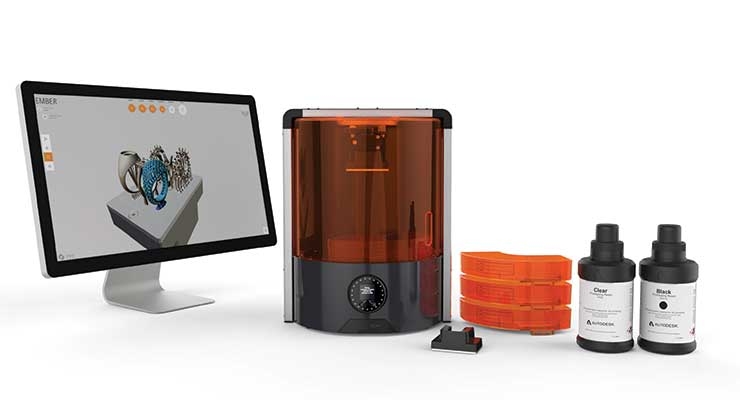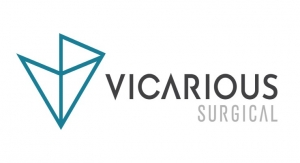Mark Crawford, Contributing Writer05.01.17
Medical device manufacturers (MDMs) are doing their best to deal with increasing pricing pressures and decreasing operational margins. Growth rates are slowing down in some developed markets but speeding up in others, such as smart devices and wearables. Younger OEMs and startups are innovating at a rapid rate and continue to find funding through angel, private equity, and venture capital channels. Larger OEMs, which are often reluctant to invest in R&D because of tighter regulatory controls, are reaching out to smaller companies for innovative technologies that can be quickly commercialized, without significant development costs.
As a result of these shifting dynamics, the process of medical device design is also going through some changes. Although traditional milestones of design input, product conceptualization and ideation, prototype design, verification, and transfer to manufacturing still exist, new project management paradigms and development tools are improving team coordination and communication, as well as design robustness—accelerating innovation in expanding markets while still controlling costs.
“Companies are seeing new opportunities in areas such as telemedicine, Internet of Things, wearables, and remote patient monitoring,” said Brian Wyatt, senior vice president for Cyient Medical Technology and Healthcare, a Hyderabad, India-based provider of engineering design services for the medical device industry. “As the medical device industry matures, increasing focus is placed on improving usability by using human factors engineering and industrial design.”
Kenneth Fine, president of Proven Process Medical Devices Inc., a Mansfield, Mass.-based provider of contract design, development, and manufacturing for the medical device industry, agreed. “When it comes to medical device design, more than ever before, the process is user-focused,” he said. “Human factors considerations are now a prominent aspect of the development process.”
Many companies are still trying to find effective ways of designing innovative products that truly save cost and time in the system, while also improving clinical outcomes. With the end-user demand for miniaturization, improved functionality, and connectivity, more stand-alone mechanical devices are being transformed into highly connected learning platforms.
“Achieving this transformation does, however, require gaining a better understanding of not only the economics of the systems within which these devices work, but also the full stakeholder groups that are involved with their use,” said Tracy MacNeal, executive vice president of corporate development for Ximedica, a design and development firm for the medical device and diagnostics industries. The company operates facilities in three U.S. states and Hong Kong. “We see this as a tremendous opportunity for companies to invigorate or disrupt current platform technologies.”
Trends in the Marketplace
MDMs are constantly aware of the need to reduce costs, improve margins, and speed up time to market. Medical device OEMs are desperate to drive down product costs for various reasons, including launching products in cost-sensitive, emerging markets and obsolescence management for legacy products.
“In response, there is increased demand for value engineering,” said Wyatt. “Design to cost, balancing costs versus features, and improving reliability while optimizing costs are some of the underlying themes of value engineering projects.”
Another approach for increasing functionality and controlling cost is combining formerly separate technologies and product categories into new products and treatments. For example, there is great interest in combination medical devices that deliver medications or biologics, especially stem cells. MDMs are also competing intensely in the self-care and home-care markets, where the most popular products (for example, wearables) merge consumer technologies and user experience expectations with clinical medical products.
“In the last few years, there has been a significant uptick in device programs that include wearable technology, wireless, software, and data communication,” said Jim Medsker, president of Keystone Solutions Group, a Kalamazoo, Mich.-based provider of product development, manufacturing, and distribution services for medical device companies.
Perhaps the market that shows the greatest convergence of technologies from different fields to create multifunctional abilities is robotics. Robotic surgery has advanced rapidly in the last five years, driven by the strong demand for minimally invasive surgeries. More players are competing in this space with full robotic or robotic-assist systems that focus on specific procedures—TransEnterix’s Senhance (laparoscopic surgery) and Stryker Corp.’s Mako (knee surgery) are just two examples of companies incorporating robotic technologies to increase the precision, control, and speed of surgical procedures.
Designing robotic surgery devices involves complex electromechanical subsystems. “The subsystems consist of interaction between multiple systems including optical systems, machine vision, autonomy, human-machine interface, and mobile robotic manipulation that requires tremendous design sophistication,” said Cyient’s deputy general manager Sathish Ramachandran.
“Another challenge with robotics,” added Bryce G. Rutter, CEO of Metaphase Design Group, a St. Louis, Mo.-based developer of high-performance industrial, commercial, and consumer products and packaging, “is being sure that the human capabilities being augmented genuinely enhance human perception and motor skills in an intuitive manner. The goal is to successfully bring traditional surgeons into a robotic environment that leverages legacy skills and simultaneously imparts a level of confidence that encourages the adoption of these advanced surgical systems.”
What OEMs Want
OEMs are eager to control costs without compromising device quality and reliability. They want to partner with reliable contract manufacturing organizations (CMOs) that provide deep knowledge across a variety of services—thereby shortening the supply chain, reducing risk, speeding development, and saving money. CMOs are also increasingly expected to provide support for documentation, regulatory filings, and intellectual property. Other sustaining engineering activities outsourced to CMOs include managing and optimizing existing product portfolios for new technology adoption, new feature additions, or part obsolescence management. Goals for managing legacy product portfolios include:
MDMs are increasingly focused on maximizing the functionality of their devices across a variety of healthcare settings. “Today, we are now connecting devices to multiple platforms, providing data analysis, and presenting that data in an actionable and timely manner,” indicated Aidan Petrie, chief innovation officer emeritus for Ximedica. “There are no shortages of inefficiencies that can be mitigated or benefits to users if you know where to look.”
Determining the amount of functionality that goes into a device depends greatly on the needs of the end user. If functionality is added without a comprehensive evaluation of how it will be used, some of that functionality may be wasted, or even become a complication, that adds no value to the procedure and results in higher design and manufacturing costs than needed.
“An increasing number of OEMs realize the potency of a user-centered innovation strategy,” said Rutter. “While many are not fully versed with the tools and techniques to conduct discovery, ergonomic, and design research, they realize the value of understanding how users will think, feel, and behave regarding the product.”
For example, observing what users do provides tremendous insight into the identification of friction points that interfere with functionality and ease of use, or identify suboptimal ergonomic interfaces that create risk and stress to end users. Watching users also provides opportunities for thinking differently, which can lead to innovative design solutions.
As a result, “more OEMs are embracing design thinking and human factors engineering, not as something sprinkled on the front end of a new product development program, but as a mindset that shapes and informs each and every step through the development process,” said Rutter.
Finally, end use must also take into account the full lifecycle of the product, including reuse, recycling, or discarding. Increasingly, the environmental impact of a product throughout its entire lifecycle is high on the radar for most MDMs. “Whether the product is a single-use, disposable, or a reusable system, it is critical that materials selection and design considerations provide a solution that has minimal environmental impact,” said Medsker.
Design Challenges
When CMOs accept orders for increasingly small, complex, and multifunctional devices, their OEM customers expect them to find a way to get the job done. CMOs must create new manufacturing processes when traditional processes cannot be scaled down sufficiently. “Some of the design challenges we face include understanding physical properties, such as how plastics flow into small spaces, electrical isolation, and in-use durability of the materials chosen,” said James Schultz, R&D engineer for Plastics One Inc., a Roanoke, Va.-based provider of design and manufacturing services for the medical device industry.
Challenges often arise with bonding dissimilar materials, handling electronics, and finding sterilization technologies that are compatible with small geometries. Other design issues include circuits that must be flexible and carry added functionality, higher-density designs that fit more features in less space, and finding or developing new hardware and assembly processes that can produce miniaturized features.
“These challenges require us to push our boundaries and explore new materials and alternate technologies—for example, biocompatible materials and insulating materials,” said Wyatt. “For multifunctional devices, the goal is integrating different modules to create a future-ready extensible platform that can quickly adopt new technologies and applications.”
Packaging all the mechanical and electronic components into a small assembly can be vexing. Devices are often battery powered as well, which adds to the space challenge. “Shaped batteries and flex circuits are often needed to accommodate complex geometries,” added Medsker. “This also drives the need at times for exotic materials that can handle high stresses and elevated temperatures, while providing long-life.”
When small packages do not have room for primary power sources such as batteries, wireless power techniques are required instead. “Similarly,” said Fine, “if small devices need to be connected, wireless technology is often the only way to achieve this. Power and antenna design and optimization then become focal challenges.”
Other concerns deal with interference and immunity. For example, will the device interfere with other devices used in the vicinity? Or can the device be interfered with by other products? These issues are especially critical with devices used in the operating room.
“From an electronic emissions standpoint, the OR is an aggressive environment,” noted Medsker. “Add to all of this the fact that devices are now using wireless technologies to transmit and receive data, which compounds the challenges.”
Although many believe that smaller is better, the one thing in healthcare that is not shrinking is the human body. Many manufacturers continue to miniaturize their devices to the point where the small size actually inhibits usability.
“For example, hand-intensive products need to be scaled appropriately to accommodate the 5th to the 95th percentile hand sizes,” said Rutter. “Once the design falls outside of this range, dexterity, precision, and control can be greatly compromised. There is a sweet spot relative to the size and topology of handheld instruments where product form, proportion, weight, and center of gravity all combine to create a seamless extension of the human hand.”
Excess multi-functionality can be a trap that sometimes snares even the most experienced OEMs. Too many MDMs combine devices because they can, rather than basing these decisions on ergonomic and design research that would identify any true benefit to the combination. “For example, the most common ‘design crush’ today is for a device to talk to a smart phone, which technically is not that complicated, but in most cases, adds no significant value [for] the end user,” said Rutter.
Tools of the Trade
Emerging as one of the most in-demand technologies in medical device manufacturing, 3D printing offers benefits over traditional design and manufacturing methods, which were not capable of producing customized devices such as hip, knee, and cranial implants. The rapid advancement of 3D printing has allowed design freedom that ensures even the most complex designs can be realized. The process is used for developing customized implants in the orthopedic market; in other MDM segments, it is mostly used for rapid prototyping, where concept evaluation and time to market is critical.
“We are seeing shifts in manufacturing planning due to the emergence of affordable 3D printing,” said Jay Zignego, senior design engineer for EG-GILERO, a Morrisville, N.C.-based provider of medical device design, development, and manufacturing services. “We are living in the age of ‘now’ and engineers are demanding answers to their design challenges on a much shorter time scale. Initially, we had a few machines with limited abilities. In the past year alone we have scaled up to several machines that produce parts with resolution that could only be attained by $100,000-plus machines in the past decade. This allows us to iterate quickly on a design and flesh out any costly issues prior to tooling in steel.”
“Depending on mechanical characteristics,” added Fine, “we use additive manufacturing for low-quantity manufacturing. This provides a cost-effective means to produce low quantities of components [plastic housing and internal parts for home-use diagnostic devices, for example] that later may need to be molded when volumes increase.”
Medsker noted that 3D printing often serves as a valuable fundraising tool for startup and early-stage companies. The technology has become more affordable for young companies, which enables them to level the playing field somewhat with bigger firms. Further, today’s high-quality 3D-printed components and assemblies not only have the aesthetic look and feel of real production parts, they are also often fully functional. “The impact of being able to create this level of product early in the development stages assists significantly in communicating the vision to all stakeholders, including investors,” said Medsker.
Design and analysis tools continue to advance and are increasingly user friendly. In the past, finite element analysis (FEA), computational fluid dynamics (CFD), and other analysis tools were separate programs that came at a high cost in initial purchase, maintenance, and training. Today, many computer-assisted drafting platforms have FEA and CFD functionality built in, and continue to become more sophisticated.
“While we have always used FEA tools for things like mechanical stress analysis, new add-ons and computer software products have expanded capabilities for specific analysis and simulation problems such as wireless antenna modeling, heat/cooling analysis, and computational fluid dynamics,” Fine said.
Virtual reality and augmented reality are well on their way to becoming incredibly potent visualization tools in medical R&D. For example, Microsoft’s HaloLens group is collaborating with Stryker to use holographic technology to design the operating room of the future. “Using this technology, Stryker and Microsoft are demonstrating how the speed of new product development can be dramatically accelerated through the ability to visualize, interact, and test concepts in virtual space, at a fraction of the cost and time,” said Rutter.
This abundance of tantalizing new technologies makes it tempting for some companies to develop “a solution in search of a problem.” This can result in funding woes for startups because they really don’t understand the healthcare system’s main problem, which is cost. “Technology today is secondary to system needs,” said MacNeal. “Once you know what system you want to build, there is no end to the technologies you can draw upon to build that system. The key is to figure out what is needed and why it is relevant.”
Rutter stresses these design tools and techniques are not a replacement for creativity; rather, they provide a quantitative basis for making intelligent decisions through the evolution of a design project. “Like all tools, it is not the tool itself that brings value to the development process, but rather the level of craftsmanship that a person possesses when using the tool,” he said. “I see many instances in the design industry of marginally qualified people using advanced design tools, which can be a recipe for disaster.”
Medsker agreed. “These tools [are] being used more extensively because they are more accessible to engineers and designers,” he added. “The risk in this trend is that it is now almost too easy to get analysis results; often the interpretation of these results is performed by those without formal, rigorous training in these areas.”
Future Impacts on Design
U.S. Food and Drug Administration and European Union regulations and standards will continue to impact product design and materials selection. For example, selected materials must comply with biocompatibility standards and be compatible with sterilization processes. Environmental considerations must also be managed, including the European Restriction of Hazardous Substances and REACH (Registration, Evaluation, Authorization, and Restriction of Chemicals) directives. In some cases, these requirements limit the candidate materials that can meet the physical performance requirements for product materials. Other regulatory design standards exist for wireless communication, electrical safety, and emissions compatibility.
Medical device design breakthroughs will continue to be driven by advances in additive manufacturing/3D printing and the Internet of Things. Many of these advances will be related to code, advanced algorithms, and machine learning. The number of materials compatible with 3D printing is also rapidly expanding—materials today include polymers, metal alloys, ceramics, fabrics, and even bio-scaffolding materials.
The Internet of Things is driven by connectivity, which is best represented in the medical device industry by the booming wearable device market. Further, connectivity is driven by sensor technologies. Advancements in biosensors will greatly impact medical product design in the future—for example, implanted sensors that improve diabetes and hypertension management and treatment. Nanosensors, such as “smart pills,” are being developed to provide internal biometric feedback, which can then be used to predict heart attacks, measure glucose levels, and track other key metrics.
“We have an emerging technologies meeting every month and keep track of new technologies in multiple sectors,” said Petrie. “There is so much activity going on that it is almost overwhelming, but the trick is to correlate the needs with the technologies available rather than to chase technologies—we simply have to move faster.”
Historically, MDMs are slow to change. They prefer to go with what has worked before. They are reluctant to disrupt their own platforms, even if the future results will be better. MacNeal urges them to reinvent themselves as solution and service providers, rather than just makers of devices.
“We are seeing solutions come from strategic partnerships between unlikely bedfellows—for example, Qualcomm and Novartis,” said MacNeal. “Quest Diagnostics and IBM Watson is another example. These companies are teaming up to bring the incredible resources in tech and retail over to the challenges of healthcare.”
Mark Crawford is a full-time freelance business and marketing/communications writer based in Madison, Wis. His clients range from startups to global manufacturing leaders. He also writes a variety of feature articles for regional and national publications and is the author of five books.
As a result of these shifting dynamics, the process of medical device design is also going through some changes. Although traditional milestones of design input, product conceptualization and ideation, prototype design, verification, and transfer to manufacturing still exist, new project management paradigms and development tools are improving team coordination and communication, as well as design robustness—accelerating innovation in expanding markets while still controlling costs.
“Companies are seeing new opportunities in areas such as telemedicine, Internet of Things, wearables, and remote patient monitoring,” said Brian Wyatt, senior vice president for Cyient Medical Technology and Healthcare, a Hyderabad, India-based provider of engineering design services for the medical device industry. “As the medical device industry matures, increasing focus is placed on improving usability by using human factors engineering and industrial design.”
Kenneth Fine, president of Proven Process Medical Devices Inc., a Mansfield, Mass.-based provider of contract design, development, and manufacturing for the medical device industry, agreed. “When it comes to medical device design, more than ever before, the process is user-focused,” he said. “Human factors considerations are now a prominent aspect of the development process.”
Many companies are still trying to find effective ways of designing innovative products that truly save cost and time in the system, while also improving clinical outcomes. With the end-user demand for miniaturization, improved functionality, and connectivity, more stand-alone mechanical devices are being transformed into highly connected learning platforms.
“Achieving this transformation does, however, require gaining a better understanding of not only the economics of the systems within which these devices work, but also the full stakeholder groups that are involved with their use,” said Tracy MacNeal, executive vice president of corporate development for Ximedica, a design and development firm for the medical device and diagnostics industries. The company operates facilities in three U.S. states and Hong Kong. “We see this as a tremendous opportunity for companies to invigorate or disrupt current platform technologies.”
Trends in the Marketplace
MDMs are constantly aware of the need to reduce costs, improve margins, and speed up time to market. Medical device OEMs are desperate to drive down product costs for various reasons, including launching products in cost-sensitive, emerging markets and obsolescence management for legacy products.
“In response, there is increased demand for value engineering,” said Wyatt. “Design to cost, balancing costs versus features, and improving reliability while optimizing costs are some of the underlying themes of value engineering projects.”
Another approach for increasing functionality and controlling cost is combining formerly separate technologies and product categories into new products and treatments. For example, there is great interest in combination medical devices that deliver medications or biologics, especially stem cells. MDMs are also competing intensely in the self-care and home-care markets, where the most popular products (for example, wearables) merge consumer technologies and user experience expectations with clinical medical products.
“In the last few years, there has been a significant uptick in device programs that include wearable technology, wireless, software, and data communication,” said Jim Medsker, president of Keystone Solutions Group, a Kalamazoo, Mich.-based provider of product development, manufacturing, and distribution services for medical device companies.
Perhaps the market that shows the greatest convergence of technologies from different fields to create multifunctional abilities is robotics. Robotic surgery has advanced rapidly in the last five years, driven by the strong demand for minimally invasive surgeries. More players are competing in this space with full robotic or robotic-assist systems that focus on specific procedures—TransEnterix’s Senhance (laparoscopic surgery) and Stryker Corp.’s Mako (knee surgery) are just two examples of companies incorporating robotic technologies to increase the precision, control, and speed of surgical procedures.
Designing robotic surgery devices involves complex electromechanical subsystems. “The subsystems consist of interaction between multiple systems including optical systems, machine vision, autonomy, human-machine interface, and mobile robotic manipulation that requires tremendous design sophistication,” said Cyient’s deputy general manager Sathish Ramachandran.
“Another challenge with robotics,” added Bryce G. Rutter, CEO of Metaphase Design Group, a St. Louis, Mo.-based developer of high-performance industrial, commercial, and consumer products and packaging, “is being sure that the human capabilities being augmented genuinely enhance human perception and motor skills in an intuitive manner. The goal is to successfully bring traditional surgeons into a robotic environment that leverages legacy skills and simultaneously imparts a level of confidence that encourages the adoption of these advanced surgical systems.”
What OEMs Want
OEMs are eager to control costs without compromising device quality and reliability. They want to partner with reliable contract manufacturing organizations (CMOs) that provide deep knowledge across a variety of services—thereby shortening the supply chain, reducing risk, speeding development, and saving money. CMOs are also increasingly expected to provide support for documentation, regulatory filings, and intellectual property. Other sustaining engineering activities outsourced to CMOs include managing and optimizing existing product portfolios for new technology adoption, new feature additions, or part obsolescence management. Goals for managing legacy product portfolios include:
- Replacing maximum obsolete parts with minimum design changes to other parts or the circuit board, reducing overall cost of the bill of materials (BOM)
- Bringing commonality in BOM across different product portfolios resulting in a reduction in BOM
- Expertise in managing proactive obsolescence management for different product portfolios resulting in zero stoppages in production
MDMs are increasingly focused on maximizing the functionality of their devices across a variety of healthcare settings. “Today, we are now connecting devices to multiple platforms, providing data analysis, and presenting that data in an actionable and timely manner,” indicated Aidan Petrie, chief innovation officer emeritus for Ximedica. “There are no shortages of inefficiencies that can be mitigated or benefits to users if you know where to look.”
Determining the amount of functionality that goes into a device depends greatly on the needs of the end user. If functionality is added without a comprehensive evaluation of how it will be used, some of that functionality may be wasted, or even become a complication, that adds no value to the procedure and results in higher design and manufacturing costs than needed.
“An increasing number of OEMs realize the potency of a user-centered innovation strategy,” said Rutter. “While many are not fully versed with the tools and techniques to conduct discovery, ergonomic, and design research, they realize the value of understanding how users will think, feel, and behave regarding the product.”
For example, observing what users do provides tremendous insight into the identification of friction points that interfere with functionality and ease of use, or identify suboptimal ergonomic interfaces that create risk and stress to end users. Watching users also provides opportunities for thinking differently, which can lead to innovative design solutions.
As a result, “more OEMs are embracing design thinking and human factors engineering, not as something sprinkled on the front end of a new product development program, but as a mindset that shapes and informs each and every step through the development process,” said Rutter.
Finally, end use must also take into account the full lifecycle of the product, including reuse, recycling, or discarding. Increasingly, the environmental impact of a product throughout its entire lifecycle is high on the radar for most MDMs. “Whether the product is a single-use, disposable, or a reusable system, it is critical that materials selection and design considerations provide a solution that has minimal environmental impact,” said Medsker.
Design Challenges
When CMOs accept orders for increasingly small, complex, and multifunctional devices, their OEM customers expect them to find a way to get the job done. CMOs must create new manufacturing processes when traditional processes cannot be scaled down sufficiently. “Some of the design challenges we face include understanding physical properties, such as how plastics flow into small spaces, electrical isolation, and in-use durability of the materials chosen,” said James Schultz, R&D engineer for Plastics One Inc., a Roanoke, Va.-based provider of design and manufacturing services for the medical device industry.
Challenges often arise with bonding dissimilar materials, handling electronics, and finding sterilization technologies that are compatible with small geometries. Other design issues include circuits that must be flexible and carry added functionality, higher-density designs that fit more features in less space, and finding or developing new hardware and assembly processes that can produce miniaturized features.
“These challenges require us to push our boundaries and explore new materials and alternate technologies—for example, biocompatible materials and insulating materials,” said Wyatt. “For multifunctional devices, the goal is integrating different modules to create a future-ready extensible platform that can quickly adopt new technologies and applications.”
Packaging all the mechanical and electronic components into a small assembly can be vexing. Devices are often battery powered as well, which adds to the space challenge. “Shaped batteries and flex circuits are often needed to accommodate complex geometries,” added Medsker. “This also drives the need at times for exotic materials that can handle high stresses and elevated temperatures, while providing long-life.”
When small packages do not have room for primary power sources such as batteries, wireless power techniques are required instead. “Similarly,” said Fine, “if small devices need to be connected, wireless technology is often the only way to achieve this. Power and antenna design and optimization then become focal challenges.”
Other concerns deal with interference and immunity. For example, will the device interfere with other devices used in the vicinity? Or can the device be interfered with by other products? These issues are especially critical with devices used in the operating room.
“From an electronic emissions standpoint, the OR is an aggressive environment,” noted Medsker. “Add to all of this the fact that devices are now using wireless technologies to transmit and receive data, which compounds the challenges.”
Although many believe that smaller is better, the one thing in healthcare that is not shrinking is the human body. Many manufacturers continue to miniaturize their devices to the point where the small size actually inhibits usability.
“For example, hand-intensive products need to be scaled appropriately to accommodate the 5th to the 95th percentile hand sizes,” said Rutter. “Once the design falls outside of this range, dexterity, precision, and control can be greatly compromised. There is a sweet spot relative to the size and topology of handheld instruments where product form, proportion, weight, and center of gravity all combine to create a seamless extension of the human hand.”
Excess multi-functionality can be a trap that sometimes snares even the most experienced OEMs. Too many MDMs combine devices because they can, rather than basing these decisions on ergonomic and design research that would identify any true benefit to the combination. “For example, the most common ‘design crush’ today is for a device to talk to a smart phone, which technically is not that complicated, but in most cases, adds no significant value [for] the end user,” said Rutter.
Tools of the Trade
Emerging as one of the most in-demand technologies in medical device manufacturing, 3D printing offers benefits over traditional design and manufacturing methods, which were not capable of producing customized devices such as hip, knee, and cranial implants. The rapid advancement of 3D printing has allowed design freedom that ensures even the most complex designs can be realized. The process is used for developing customized implants in the orthopedic market; in other MDM segments, it is mostly used for rapid prototyping, where concept evaluation and time to market is critical.
“We are seeing shifts in manufacturing planning due to the emergence of affordable 3D printing,” said Jay Zignego, senior design engineer for EG-GILERO, a Morrisville, N.C.-based provider of medical device design, development, and manufacturing services. “We are living in the age of ‘now’ and engineers are demanding answers to their design challenges on a much shorter time scale. Initially, we had a few machines with limited abilities. In the past year alone we have scaled up to several machines that produce parts with resolution that could only be attained by $100,000-plus machines in the past decade. This allows us to iterate quickly on a design and flesh out any costly issues prior to tooling in steel.”
“Depending on mechanical characteristics,” added Fine, “we use additive manufacturing for low-quantity manufacturing. This provides a cost-effective means to produce low quantities of components [plastic housing and internal parts for home-use diagnostic devices, for example] that later may need to be molded when volumes increase.”
Medsker noted that 3D printing often serves as a valuable fundraising tool for startup and early-stage companies. The technology has become more affordable for young companies, which enables them to level the playing field somewhat with bigger firms. Further, today’s high-quality 3D-printed components and assemblies not only have the aesthetic look and feel of real production parts, they are also often fully functional. “The impact of being able to create this level of product early in the development stages assists significantly in communicating the vision to all stakeholders, including investors,” said Medsker.
Design and analysis tools continue to advance and are increasingly user friendly. In the past, finite element analysis (FEA), computational fluid dynamics (CFD), and other analysis tools were separate programs that came at a high cost in initial purchase, maintenance, and training. Today, many computer-assisted drafting platforms have FEA and CFD functionality built in, and continue to become more sophisticated.
“While we have always used FEA tools for things like mechanical stress analysis, new add-ons and computer software products have expanded capabilities for specific analysis and simulation problems such as wireless antenna modeling, heat/cooling analysis, and computational fluid dynamics,” Fine said.
Virtual reality and augmented reality are well on their way to becoming incredibly potent visualization tools in medical R&D. For example, Microsoft’s HaloLens group is collaborating with Stryker to use holographic technology to design the operating room of the future. “Using this technology, Stryker and Microsoft are demonstrating how the speed of new product development can be dramatically accelerated through the ability to visualize, interact, and test concepts in virtual space, at a fraction of the cost and time,” said Rutter.
This abundance of tantalizing new technologies makes it tempting for some companies to develop “a solution in search of a problem.” This can result in funding woes for startups because they really don’t understand the healthcare system’s main problem, which is cost. “Technology today is secondary to system needs,” said MacNeal. “Once you know what system you want to build, there is no end to the technologies you can draw upon to build that system. The key is to figure out what is needed and why it is relevant.”
Rutter stresses these design tools and techniques are not a replacement for creativity; rather, they provide a quantitative basis for making intelligent decisions through the evolution of a design project. “Like all tools, it is not the tool itself that brings value to the development process, but rather the level of craftsmanship that a person possesses when using the tool,” he said. “I see many instances in the design industry of marginally qualified people using advanced design tools, which can be a recipe for disaster.”
Medsker agreed. “These tools [are] being used more extensively because they are more accessible to engineers and designers,” he added. “The risk in this trend is that it is now almost too easy to get analysis results; often the interpretation of these results is performed by those without formal, rigorous training in these areas.”
Future Impacts on Design
U.S. Food and Drug Administration and European Union regulations and standards will continue to impact product design and materials selection. For example, selected materials must comply with biocompatibility standards and be compatible with sterilization processes. Environmental considerations must also be managed, including the European Restriction of Hazardous Substances and REACH (Registration, Evaluation, Authorization, and Restriction of Chemicals) directives. In some cases, these requirements limit the candidate materials that can meet the physical performance requirements for product materials. Other regulatory design standards exist for wireless communication, electrical safety, and emissions compatibility.
Medical device design breakthroughs will continue to be driven by advances in additive manufacturing/3D printing and the Internet of Things. Many of these advances will be related to code, advanced algorithms, and machine learning. The number of materials compatible with 3D printing is also rapidly expanding—materials today include polymers, metal alloys, ceramics, fabrics, and even bio-scaffolding materials.
The Internet of Things is driven by connectivity, which is best represented in the medical device industry by the booming wearable device market. Further, connectivity is driven by sensor technologies. Advancements in biosensors will greatly impact medical product design in the future—for example, implanted sensors that improve diabetes and hypertension management and treatment. Nanosensors, such as “smart pills,” are being developed to provide internal biometric feedback, which can then be used to predict heart attacks, measure glucose levels, and track other key metrics.
“We have an emerging technologies meeting every month and keep track of new technologies in multiple sectors,” said Petrie. “There is so much activity going on that it is almost overwhelming, but the trick is to correlate the needs with the technologies available rather than to chase technologies—we simply have to move faster.”
Historically, MDMs are slow to change. They prefer to go with what has worked before. They are reluctant to disrupt their own platforms, even if the future results will be better. MacNeal urges them to reinvent themselves as solution and service providers, rather than just makers of devices.
“We are seeing solutions come from strategic partnerships between unlikely bedfellows—for example, Qualcomm and Novartis,” said MacNeal. “Quest Diagnostics and IBM Watson is another example. These companies are teaming up to bring the incredible resources in tech and retail over to the challenges of healthcare.”
Mark Crawford is a full-time freelance business and marketing/communications writer based in Madison, Wis. His clients range from startups to global manufacturing leaders. He also writes a variety of feature articles for regional and national publications and is the author of five books.




























